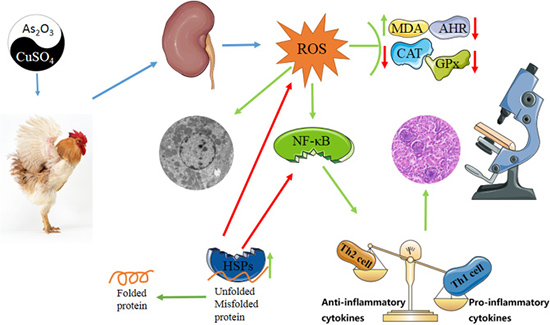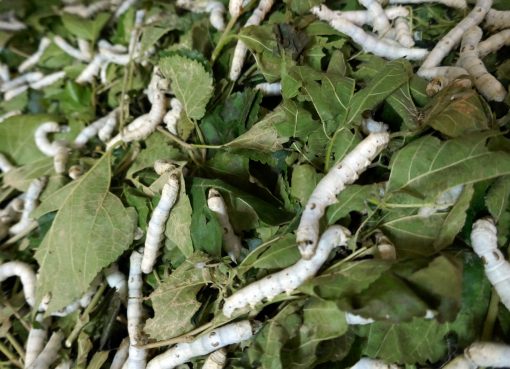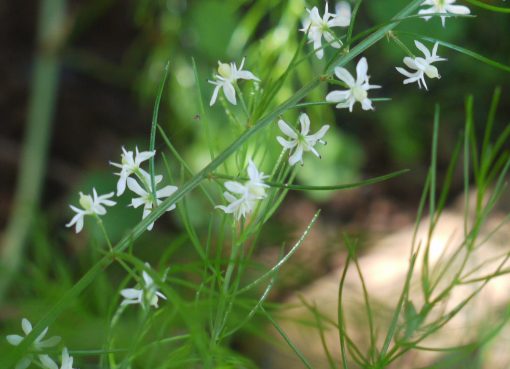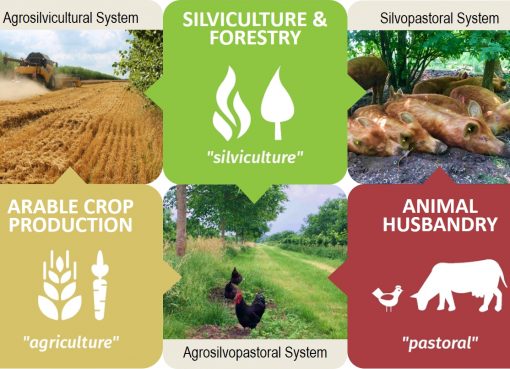Sikhamoni Haloi*, Robin Bhuyan, Bibeka Nanda Saikia and Lakhyajyoti Borah
Department of Animal Nutrition
College of Veterinary Science, Assam Agricultural University, Khanapara, Guwahati 781022
*Corresponding author, email: sikhahaloi@rediffmail.com
Introduction
Oxidative stress includes some important mechanisms responsible for biological damage in live animals affecting growth and performance. Oxidative rancidity is one of the major reasons behind meat deterioration (Morrisey et al., 1997), which includes unpleasant odour, loss in flavour, texture, reduced nutritional value (Gray et al., 1996). Both fish meal and oil are used as a source of energy and protein in the poultry diet. High amount of polyunsaturated fatty acid (PUFA) in these ingredients, specifically the omega 3, causes susceptibility of chicken meat to oxidative rancidity (Manilla and Husveth, 1999). This can be prevented by incorporating antioxidants into the diet (Morrisey et al., 1997). Antioxidants are classified as synthetic or natural. Antioxidants are molecules present in the plants (Fruits, leaves, bark and seed). The most common natural antioxidants are tocopherols (vitamin E) and ascorbic acid (vitamin C). Some other natural antioxidants are carotene, zea-xanthine, cantha-xanthine, asta-xanthine, lycopene, flavonoids like quercitin, rutin, epigallocatechin, etc. and non-flavonoids like rosmanol, rosmaridiphenol and boldine, etc.
Synthetic antioxidants are most widely used in food for preservation due to their cost-effectiveness. Most of these antioxidants are derived from phenolic structures like butylated hydroxytoluene (BHT), butylated hydroxyanisole (BHA), tert-butylhydroxyquinone (TBHQ) and propyl, dodecyl and octagallate. Ethoxyquin (ETOX) is a commonly used synthetic antioxidant in animal diets that has a non-phenolic structure (Bailey et al., 1996). For use of antioxidants in humans and animals, the efficacy and safety margin of the antioxidant should be previously known. The extract of rosemary leaf (Rosmarinus officinalis L.) was first used for pigmentation and later for food preservation due to the presence of antioxidant components like carnosol, rosmanol, isorosanol and rosmaridiphenol. Reduced glutathione (GSH) with vitamin C and E reduces oxidative stress in living organisms. GSH releases hydrogen atoms and becomes oxidised glutathione (GSSG). GSH helps to stabilise free radicals and act as cofactor of glutathione peroxidise (GSHpx). This enzyme contains Selenium (Se) as prosthetic group, makes it dependant on the availability of this metal. It has been noticed that deficiency of dietary Se causes oxidative stress in poultry. It can be prevented by management of diet. For improving the immunity status in poultry, Surai (2002) gave practical recommendations. Superoxide dismutase (SOD) is another enzyme in the antioxidant defence. The presence of this enzyme in cell allows a fast dismutation of O2– to O2 and H2O2. There are two types SOD in eukaryotic cells. The first one occurs mostly in cytosols and incorporates metals Copper (Cu) and Zinc (Zn) in its prosthetic group (Cu/Zn-SOD). The second one incorporates Manganese in its structure (Mn-SOD) and occurs in mitochondria (Fridovich, 1997). Supplementation of Cu in poultry diets causes increase in activity of Cu/ Zn dependent isoform (Ozturk-urek et al., 2001), while Cu deficiency reduces the activity of Cu/Zn-SOD in chicken erythrocytes (Ozturk-Urek et al., 2001).
Role of dietary antioxidants in prevention of oxidative stress in broilers
Supplementation of animal diet with antioxidant has more benefits other than food preservation as they are absorbed in the gut, so also perform systemic functions. Different studies have shown the advantages of supplementing animal diets with natural and/or synthetic antioxidants. Plasma GSHpx depicts the first antioxidant barrier for capillary cells, as it prevents attack of lipoperoxyl radical on the PUFA membrane (Noguchi et al., 1973). Vitamin E present in the membrane represents the second antioxidant barrier by preventing the generation of the lipoperoxidative chain. In deficiency of Se and vitamin E, these antioxidant mechanisms would not occur, thereby allow lipoperoxidation and its disease consequences to occur. Encephalomalacia is one of such diseases that affects chicks, is associated with a peroxidative dysfunction caused by deficiency of vitamin E (Fuhrmann and Sallmann, 1995). Ozturk-Urek et al. (2001) observed that the supplementation of vitamin E in poultry diets is related to a lower lipoperoxidation basal level. This effect was noticed mainly in liver, brain and heart. Dietary administration of green tea catechins has been shown to reduce lipoperoxidation in muscle (both thigh and breast), liver and heart (Tang et al., 2000). Apart from reducing the lipoperoxidation in chicken breast, inclusion of green tea in the diet decreased fat and cholesterol deposition in the carcass of the animal (Biswas and Wakita, 2001).
Role of dietary antioxidants in prevention of oxidative rancidity of broiler meat
The presence of fatty acid in the diet determines the lipid composition of broiler meat. The concentration of PUFA/saturated fatty acid balance in the carcass increases as the diet becomes richer in PUFA, assisting lipoperoxidation susceptibility in broiler meat (Grau et al., 2001). It has been revealed that the systemic effect of some antioxidants is not confined to an in vivo effect, as it can endure in the tissues post-mortem, preserving the PUFA present in the meat. Bartov and Borstein (1977) analysed the relation between the unsaturation level of the diet and the effectiveness of antioxidants like vitamin E, ETOX and BHT on the oxidative stability of abdominal fat and oxidative (dark) and glycolytic (white) chicken muscle. They observed that (vitamin E, ETOX and BHT) had a positive impact on the oxidative stability of the abdominal fat of poultry fed on saturated or unsaturated fatty acids. Bartov and Bornstein (1981) examined the effect of ETOX and dietary BHT alone or in union with vitamin E. The single effect of ETOX and BHT reduced the oxidative rancidity of adipose tissue; however, the increase in the oxidative rancidity of dark muscle tissue was not significant. Also, significant increase in vitamin E deposition in the adipose tissue was observed, which the authors illustrated as a protective effect of synthetic antioxidants on dietary vitamin E, or to lower consumption of vitamin E (sparing effect). It has been observed that natural antioxidants can also impart a stabilizing effect on meat. Different authors have observed the effect of α-tocopherol supplementation on poultry diet showing that this antioxidant provides great protection against oxidation to broiler (Grau et al., 2001) and turkey meat (Sheldon, 1997). Lopez-Bote et al. (1998) studied the effect of addition of rosemary and sage extracts and vitamin E into the broiler ration on the lipoperoxidation susceptibility of meat. They reported a significant reduction in the level of lipoperoxidation of the white muscle of poultry fed with the natural antioxidants, for different cold storage periods (up to 9 days; 4°C).
Conclusion
In view of various researches, supplementation of antioxidants in the broiler diet can be considered as a safe way of reducing oxidative stress and preventing oxidative rancidity in broiler meat. The use of natural antioxidants holds a great scope in future.
References
Bailey, C.A.; Srinivasan, L.J. and Mcgeachin, R.B. (1996). The effect of Ethoxyquin on Tissue Peroxidation and Inmune Status of Single Comb White Leghorn Cockerels. Poultry Science. 75: 1109-1112.
Bartov, I. and Bornstein, S. (1977). Stability of abdominal fat and meat of broilers: Relative effects of vitamin E, Butylated Hidroxytoluene and Ethoxyquin. British Poultry Science. 18: 59-68.
Bartov, I. and Bornstein, S. (1981). Stability of abdominal fat and meat of broilers: Combined effects of dietary vitamin E and Synthetic antioxidants. Poultry Science. 60: 1840-1845.
Biswass, A.H. and Wakita, M. (2001). Effect of dietary Japanese green tea powder supplementation on feed utilization and carcass profiles in broilers. Journal of Poultry Science. 38: 50-57.
Fridovich, I. (1997). Superoxide anion radical (O2.), superoxide dismutases and related matters. Journal of Biological Chemistry. 272: 18515-18517.
Fuhrmann, H. and Sallmann, H.P. (1995). The influence of dietary fatty acids and vitamin E on plasma prostanoids and liver microsomal alkane production in broiler chickens with regard to nutritional encephalomalacia. Journal of Nutritional Science and Vitaminology. 41: 553-561.
Grau, A.; Guardiola, F.; Grimpa, S.; Barroeta, A.C. and Codony, R. (2001). Oxidative stability of dark chicken meat through frozen storage: influence of dietary fat and alpha-tocopherol and ascorbic acid supplementation. Poultry Science. 80: 1630-1642.
Gray, J.I.; Gomaa, E.A. and Buckley, D.J. (1996). Oxidative quality and shelf life of meats. Meat Science. 43: 111S-123S.
López-Bote, C.J.; Gray, J.I.; Gomaa, E.A. and Flegal, C.J. (1998). Effect of dietary administration of oil extracts from rosemary and sage on lipid oxidation in broiler meat. British Poultry Science. 39: 235-240.
Manilla, H.A. and Husveth, F. (1999). N-3 Fatty acid enrichment and oxidative stability of broiler chicken. Acta Alimentaria. 28: 235-249.
Morrisey, P.A.; Brandon, S.; Buckley, D.J.; Sheehy, P.J.A. and Frigg, M. (1997). Tissue content of α-tocopheryl acetate supplement for various periods pre-slaughter. British Poultry Science. 38: 84- 88.
Noguchi, T., Cantor, A.H. and Scott, M.L. (1973). Mode of action of selenium and vitamin E in prevention of exudative diathesis in chicks. Journal of Nutrition. 103: 1502-1511.
Ozturk-Urek, R.; Bozkaya, L.A. and Tarhan, L. (2001).The effects of some antioxidant vitamin- and trace element-supplemented diets on activities of SOD, CAT, GSH-Px and LPO levels in chicken tissues. Cell Biochemistry and Function.19: 153-157.
Sheldon, B.W.; Curtis, P.A.; Dawson, P.L. and Ferket, P.R. (1997). Effect of dietary vitamin E on the oxidative stability, flavour, colour and volatile profiles of refrigerated and frozen turkey breast meat. Poultry Science. 76: 634-641.
Surai, P.F. (2002) Selenium in poultry nutrition 2. Reproduction, egg and meat quality and practical applications. World’s Poultry Science Journal. 58: 431-450.
Tang, S.Z.; Kerry, J.P.; Sheehan, D.; Buckley, D.J. and Morrissey, P.A. (2000) Dietary tea catechins and iron-induced lipid oxidation in chicken meat, liver and heart. Meat Science. 56: 285-290.




